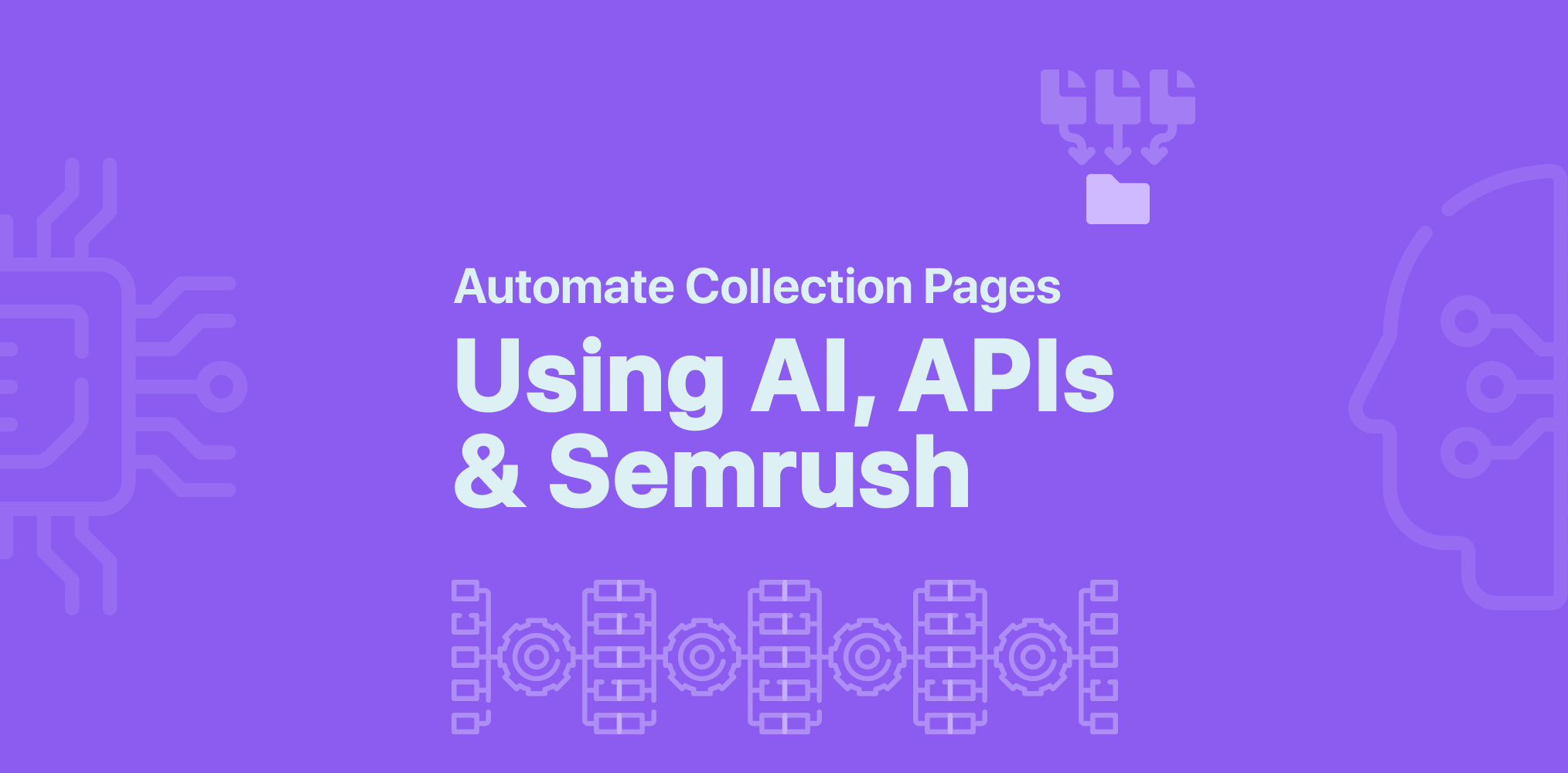
In the competitive world of e-commerce, manually curating collection pages is no longer sustainable. Customers expect timely, relevant, and well-optimized collections that reflect current trends and search demand. However, creating and maintaining these pages manually can be inefficient and slow. By leveraging APIs, AI-powered insights, and search data, collection page generation can be automated—allowing stores to capitalize on trends and improve SEO without the manual workload.

Step 1: retrieving product feed data via API
The foundation of any collection page is product data. Instead of relying on spreadsheets or manual curation, an API connection to the e-commerce platform retrieves live product information, ensuring that collections always contain relevant and in-stock items. This includes product names, categories, tags, pricing, stock levels, and sales performance. Automating this step ensures that newly generated collection pages dynamically pull the most relevant products, eliminating the risk of outdated or empty collections.
Step 2: identifying high-value keywords with Semrush API
Not all collection pages are worth creating. Using keyword and competitor analysis from Semrush API, it’s possible to determine which topics have strong organic search potential. This data helps uncover high-demand keyword opportunities, competitor gaps, and seasonal trends. By analyzing search volume, ranking difficulty, and customer intent, businesses can create collection pages that align with what customers are actively searching for, rather than guessing which pages might perform well.
Step 3: AI-powered collection page optimization
Once keyword and search data are gathered, AI tools can generate SEO-friendly titles, meta descriptions, and category descriptions. This eliminates the need for manual copywriting while ensuring each page is optimized for search engines. For example, if data suggests a rising interest in “Minimalist Office Plants,” AI can generate a title like “Minimalist Office Plants – Stylish & Low Maintenance” along with a compelling description highlighting the collection’s benefits. AI can also suggest internal linking strategies, improving navigation and SEO structure.
Step 4: validating collection page potential
Before publishing a new collection, it’s essential to validate whether it makes sense strategically. The system checks if enough products match the collection theme, whether search data supports the topic, and if there’s a competitive gap that can be leveraged. If a page meets the criteria, it is automatically created; if not, it is flagged for manual review. This ensures that only high-value collection pages are launched, avoiding unnecessary pages that may not drive traffic or conversions.
Step 5: auto-creating the collection page
Once validated, the collection page is generated via API. This includes assigning a URL, placing the appropriate products, and structuring the content for SEO. The process ensures that each collection is optimized with the right metadata, filtered product listings, and internal links, allowing it to rank effectively in search results. Automating this step removes the need for time-consuming manual work while ensuring consistency across the site.
Step 6: monitoring performance and iteration
After a collection page goes live, tracking its performance is crucial. Using tools like Google Analytics, Google Search Console, and e-commerce platform insights, the system monitors traffic, conversions, and ranking improvements. This data is then fed back into the automation process, helping refine future collection page ideas based on real performance data. Over time, this creates a cycle of continuous optimization, ensuring that the best-performing collection pages remain prioritized.
Why automate collection pages?
Automating collection page creation eliminates the inefficiencies of manual curation while ensuring that e-commerce stores can adapt quickly to market trends. It allows businesses to capitalize on search demand instantly, improve SEO rankings, and drive higher conversions without the constant need for human intervention. With an API-driven approach, collection pages become dynamic assets that continuously evolve based on data, giving stores a competitive edge in an ever-changing market.
By integrating API-based product feeds, AI content generation, and Semrush-powered keyword analysis, e-commerce stores can create high-impact collection pages that not only attract traffic but also drive meaningful engagement and sales. Instead of relying on slow manual updates, automation ensures that the right collections are created at the right time, maximizing growth opportunities with minimal effort.

